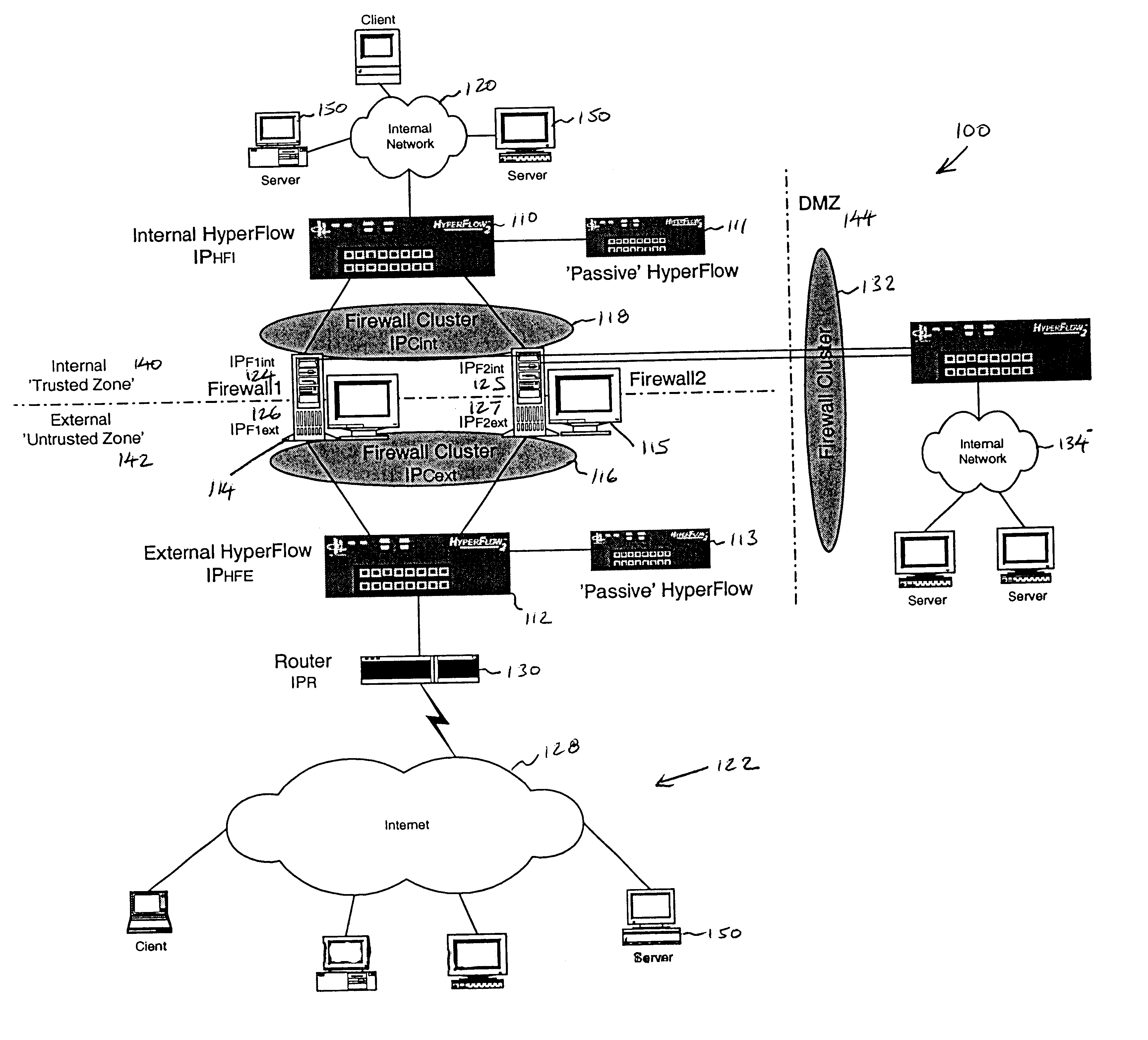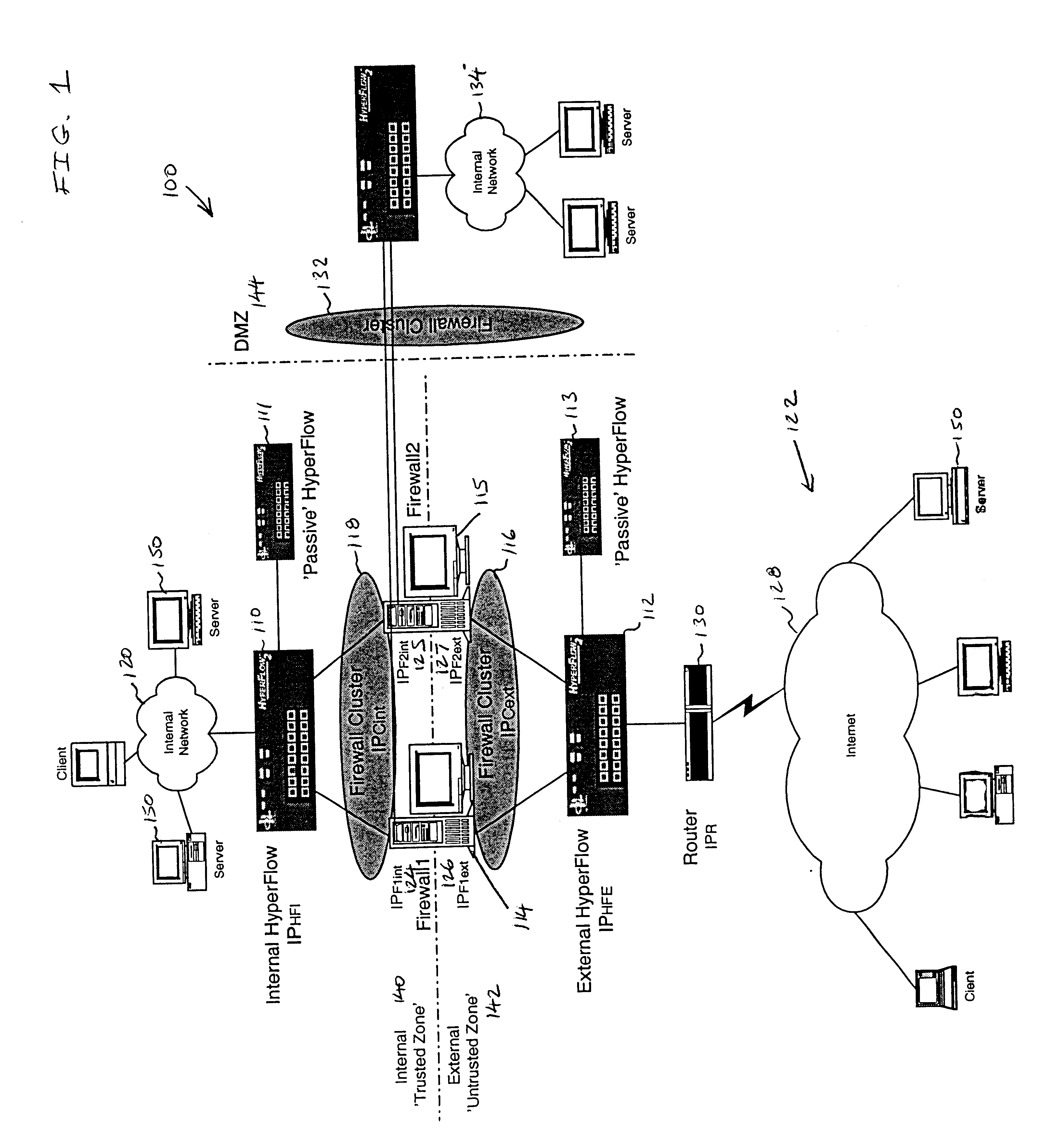Firewall clustering for multiple network servers
a network server and firewall technology, applied in the field of computer networking, can solve the problems of reducing the capacity of the cluster, requiring expansion, downtime and additional capital expenditure, and affecting the entire system, so as to reduce the computing required to manage the cluster on the server, the effect of linear clustering and freeing computing power
- Summary
- Abstract
- Description
- Claims
- Application Information
AI Technical Summary
Benefits of technology
Problems solved by technology
Method used
Image
Examples
Embodiment Construction
Referring to FIG. 1, a schematic block diagram illustrates an embodiment of a firewall clustering system 100 that connects two or more firewalls to two or more distinct networks. For example Firewall1114 and Firewall2115 interconnect to two or more distinct networks such as an internal network 120 and an external network 122, here the Internet 128, in an arrangement with high-availability and scaling of processing capacity. Firewalls maintain client-server state information and protect the information from undesired transfer across the internal-external boundary.
Flow controllers are connected to the firewalls and placed on both the internal “trusted” side and the external “untrusted” side of the firewalls. A plurality of network flow controllers, for example an internal flow controller IPHFI 110 and an external network flow controller IPHFE 112, manage an internal firewall cluster IPCint 118 and an external firewall cluster IPCext 116. The illustrative configuration includes optiona...
PUM
 Login to View More
Login to View More Abstract
Description
Claims
Application Information
 Login to View More
Login to View More - R&D
- Intellectual Property
- Life Sciences
- Materials
- Tech Scout
- Unparalleled Data Quality
- Higher Quality Content
- 60% Fewer Hallucinations
Browse by: Latest US Patents, China's latest patents, Technical Efficacy Thesaurus, Application Domain, Technology Topic, Popular Technical Reports.
© 2025 PatSnap. All rights reserved.Legal|Privacy policy|Modern Slavery Act Transparency Statement|Sitemap|About US| Contact US: help@patsnap.com



